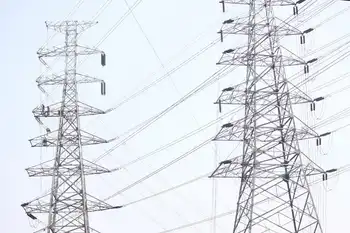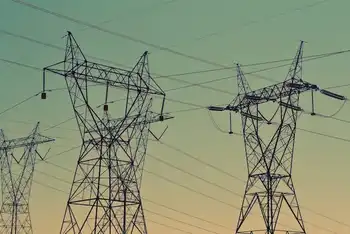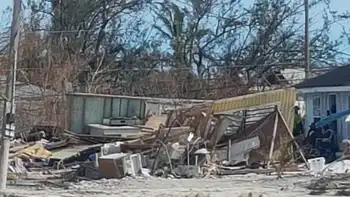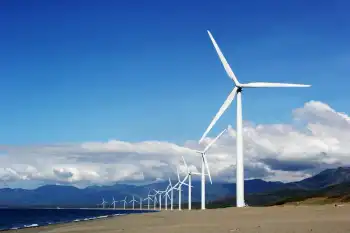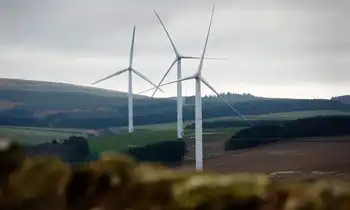Natural gas plant generating opposition
By Toronto Star
Electrical Testing & Commissioning of Power Systems
Our customized live online or in‑person group training can be delivered to your staff at your location.

- Live Online
- 12 hours Instructor-led
- Group Training Available
The Oakville homeowner says he's already paid his dues, forced like other residents to breathe in pollution from existing industry, including emissions from a nearby Petro-Canada lubricants plant, a Ford Motor paint plant, two wastewater treatment facilities, and a St. Lawrence Cement mill – all within a few kilometres.
"This whole area has too much heavy industry already," says MacKenzie, frustrated at the thought that another major polluter could be built less than two kilometres from his front door on Benita Court.
His concern, shared by most of his neighbours, hasn't stopped Ontario's power-planning agency from plowing ahead with a plan to locate an 850-megawatt natural gas generating station in southwest GTA. The final site will be one of four locations clustered around the southern border of Mississauga and Oakville. Three are within the community of Clarkson Village.
The Ontario Power Authority was to have decided which private developer will build and operate the new plant – almost twice the size of the Portlands Energy Centre near Toronto's Beach and Leslieville neighbourhoods – in late August. It now expects to award the contract in late September and promises to work with the community to address air-quality concerns over the next few weeks.
It's a reprieve at best. Energy and Infrastructure Minister George Smitherman has made clear that the proposed plant is coming – it must come – by 2013 as part of a larger plan to strengthen Ontario's electricity system and lower greenhouse-gas emissions. The government has already demolished the Lakeview coal-fired generating station and is ambitiously aiming to shut down the rest of Ontario's dirty coal fleet, including the mammoth Nanticoke station on Lake Erie, by 2014.
Smitherman recently announced that by October 2010 two of eight coal units at Nanticoke and two of four units at the Lambton facility in Sarnia will be closed, accelerating the government's phase-out strategy by at least a year.
To make those shutdowns possible, cleaner-burning natural gas plants have been built in Brampton and east Toronto, and two more are under construction in Halton and York regions. They're supposed to emit up to half the greenhouse-gas emissions of a coal plant and, because they can be fired up and down relatively fast, they're considered a way to manage the fickle output of weather-dependent wind farms sprouting across the region.
The power authority says new gas generation in the southwest GTA is the crucial missing link to a complex energy puzzle. True, the plant will emit carbon dioxide, as well as smog-causing particulates and nitrogen oxides. But the agency insists that, in the absence of the Lakeview coal station, building a high-efficiency gas plant is the cleanest way to accommodate fast growth in Mississauga and Oakville. The plant will emit far less CO2, won't spew mercury and sulphur, and is expected to operate no more than 40 per cent of the time. Local residents, including MacKenzie, are being asked to take one for the team. "Southwest GTA needs a local supply of electricity and there is no way around that," power authority spokesman Ben Chin says.
The community, however, continues to dig in its heels. Protest rallies have been held in Oakville and Mississauga, one attracting more than 1,000 people in the middle of vacation season. Messages of opposition are being spread through social networking sites such as Facebook. More than 17,000 people have signed petitions, and residential streets near the affected areas are dotted with "No Power Plant" lawn signs.
Mississauga Mayor Hazel McCallion and Oakville Mayor Rob Burton have told Premier Dalton McGuinty they don't want the plant, and both city councils have called on the province to abandon its efforts. There's even opposition within McGuinty's own party. "I'm a lifelong resident of the area, and I'm not in favour of having another power plant in the south," says Charles Sousa, Liberal MPP for Mississauga South, adding that he grew up on the doorsteps of the old Lakeview station. "We've been doing our part."
It's not a case of community NIMBYism, opponents of the plant insist, referring to the acronym "Not In My Back Yard." Mike Douglas, who lives a little north of the affected neighbourhoods and volunteers as president of the Sheridan Homelands Ratepayers' Association, says it's about democracy – a community and its political leaders virtually united in protest.
"We've got an elected member of Parliament, mayors, council members," says Douglas, who accuses the power authority and Smitherman of "bullying" the community.
"All are standing against the gas plant and we're going to get it shoved down our throats anyways. We find ourselves hoping that we'll wake up and this has been some sort of weird dream."
Opponents question the rush to build a plant in a province where industrial electricity demand has plummeted, and where overall power consumption has fallen annually since 2006. The province's Independent Electricity System Operator estimated last month that consumption will fall 5.5 per cent in 2009 and may show a slight increase of 0.2 per cent in 2010 as the economy slowly recovers.
The province has more electricity at times than it can handle, a situation that has forced nuclear operator Bruce Power to turn down or completely shut off reactors this spring and summer. In July, Bruce said it was shelving its effort to build a new nuclear plant in Nanticoke because of what one executive described as a "surprising" drop in electricity demand.
Chin of the power authority says it would be a mistake to take the province-wide average and apply it to Mississauga and Oakville. "Mississauga is not the same as Windsor," he says, referring to one of Ontario's automotive centres, hard hit by job losses and factory closings. "Even through this period (of downturn) in 2006, 2007 and 2008, residential demand and commercial demand (in Mississauga) is still on a steady growth path. Local demand is not going down."
Numbers obtained from Enersource Hydro Mississauga show peak power demand since the start of 2006 has declined by 13.5 per cent. Overall annual consumption has remained relatively steady, but has still fallen since 2007.
But even if residents buy the argument that long-term growth is a certainty, they maintain there is no need to locate a gas plant so close to densely populated residential neighbourhoods when there are rural communities willing to accommodate it.
Marie Trainer, mayor of Haldimand County, which includes Nanticoke, confirmed to the Star that a gas plant would be welcome as long as it meets all regulations and planning requirements. "Haldimand wants to be known as the energy hub for Ontario," she said.
In fact, a Canadian subsidiary of U.S. power developer Competitive Power Ventures has already scoped out a site next to the Nanticoke coal plant where it hopes to build a 1,200-megawatt natural gas station. All it needs is a deal with the power authority.
Boyd Upper, a retired medical doctor in Mississauga's Lorne Park, just next to Clarkson Village and "down wind" of the proposed facility, says any decision on where a new fossil-fuel plant is located must make health a top priority.
He refers to the Ministry of Environment's own three-part study of the Clarkson air shed, which it determined was overtaxed with pollution. Most alarming has been the high level of fine particulate matter, or PM2.5, detected in the area. These are tiny particles of dust, dirt and soot that are less than 2.5 micrometres in size and can get lodged deep within the lungs. Too much exposure can lead to serious health problems over time.
Natural gas plants are large emitters of PM2.5, along with emissions from vehicles, residential gas furnaces and other industrial operations. Upper says the smoke stacks of natural gas plants are less than half the height of stacks used in a coal plant like Lakeview. At this lower height, particulates and other emissions don't disperse as well and tend to settle locally.
"Clarkson is probably one of the worst places in Ontario to locate a gas plant because of existing pollution," Upper says. "The place to put a plant, if we want one at all, is where it will do the least harm to the fewest people. Putting them upwind of the GTA is asking for trouble; it's compounding a problem."
He still holds out hope that the government will have a change of heart. "I prefer to be optimistic, I prefer to think the (power authority's one-month delay) is the first step of sanity setting into the provincial government, and that the health issues are starting to impact the minister of energy."
Residents such as Douglas, however, aren't so sure. "Today, I'm a little more disheartened that he just doesn't care."





